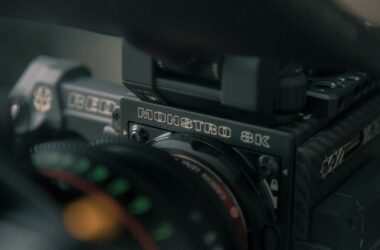So you launch Premiere Pro, open your project, start editing, and… LAG. UGH… guess you’ll just work through it as “that’s just Premiere Pro.” Well… no. Premiere Pro is a very fast and responsive software, it just has to be configured with the proper hardware. If you are editing anything more complicated than a video of your furry friend, you need to make sure your PC is optimized for Premiere Pro or you will encounter a significant increase in Premiere instability and a decrease in editing efficiency. Now, we all know that Premiere Pro is the most stable software in the world and literally never crashes. Oh wait… but what if it could be true?? Intrigued? Of course. Let us begin.
Specing your System
Having worked with large amounts of editors and VFX artists over the years, I’ve started to see certain patterns emerge based on the type of hardware they are using and what works the best. Now, I won’t be going over exactly how to build your system. But I will be going over some key items you should have installed. This includes, how much RAM you need to edit 4k video, the best video card for editing, and the types of drives you should never use if you value your footage.
Random Access Memory (RAM)
With the prevalence of 4K video among today’s editorial projects, overlooking the amount of ram you have in your system might determine whether you can focus on the art of editing… or cosplay as the BestBuy Geeksquad while you try and figure out why Premiere keeps crashing. In general, you need a minimum of 32GB for 1080p footage, 64GB for 4K footage, and 128GB for 6K footage.
When buying RAM, make sure you choose a decent brand and not just the cheapest one… otherwise, it could fail and, while you probably won’t lose data, you’d end up with a nice foot warmer until a replacement stick arrives.
The RAM I recommend:
Don’t call me a fanboy, but I generally do enjoy Corsair products. I’ve also found their RAM to be reliable and the LPX series fits in most builds with zero issues with the low profile design.
Something you might notice when shopping for ram is its speed. So long as the RAM is not abhorrently slow (2133Mhz for example) you will be fine with buying whatever is readily available. As far as what I use, 3600Mhz is the ideal frequency for me and I’ve never had any issues. If Corsair isn’t available, I also recommend G.Skill, and Crucial.
For laptops, you need a slightly smaller type of RAM offered here by the likes of G.Skill and Crucial.
Before you buy, make sure that your motherboard supports DDR4 RAM. Most do, but if you have an older computer (pre-2015)… you might need DDR3. However, if you have a cutting-edge PC with Intel’s 12 generation chips, you will need DDR5! The “budget” option being Crucial and the “premium” option being Corsair.
Video Cards…
I 👏 hate 👏 the 👏 video 👏 card 👏 shortage 👏. It sucks and everything is so damn expensive. But with that aside, having a good video card is extremely important. If you want to do any type of GPU accelerated effects, color grading, VFX, or working with RED footage, a good video card is not a “nice-to-have,” it is a requirement.
RTX is a gamechanger
RTX itself is only useful for VFX, ray-traced rendering, and gaming. However, within these RTX cards are a plethora of Tensor and CUDA cores. These Tensor cores speed up AI-powered effects immensely. One software that benefits the most from this is Davinci Resolve. When it comes to denoising, speed warp, optical flow, and super scaling, these RTX cards are an absolute game-changer. The CUDA cores, on the other hand, help with video encoding and decoding. The more you have, the faster.
In my opinion, the best video card for this is the EVGA RTX 3060. If you edit anything above 4K video, however, you will benefit from a card with increased compute power. There is nothing more annoying than getting waiting on renders. In that case, I recommend the EVGA RTX 3080 with double the CUDA cores. If you are wanting to have the most power available, look no further than the EVGA RTX 3090. With 24Gb of vRAM and nearly double the CUDA/Tensor cores of the 3080, this card can pretty much do anything… with ease.
“Should I get two cards?” Yes! When it comes to video editing, the more the merrier. Just remember to not bridge the cards using NV-link. That is for gaming and won’t help with video editing. In fact… it might just make things slower. And even with gaming, multiple cards are known to cause a lot of system instability and random compatibility issues.
Also, why am I only listing EVGA? Because I’ve owned maybe 9 or 10 of their cards and have NEVER had any serious issues. Also, they have good support, use quality components, and their style is always on point. In regards to AMD Radeon… they don’t have CUDA so they are dead to me.
Storage: What to use and what to avoid
The most common bottleneck in the video pipeline is slow storage. So many times I’ll see people editing off a $5000 computer and be like, “OMG Premiere is so slowwww” only to then notice they are editing off one of these awful things. Not only are those portable HDDs terribly slow, but they also fail. And unfortunately, I have witnessed this happen multiple times. With that being said, let’s get into what storage to use.
Ask anyone who’s worked with me, I love these drives
Legit, The SanDisk Extreme PRO is the best drive I’ve ever owned… I am a keeper of four of them in fact! They are crazy durable, made very solidly, super-fast, never overheat, and best of all they are water/dust/shockproof. If you are a laptop editor, you will also benefit from the increased battery life as they consume less energy than their mechanical counterparts.
Normally, I’d offer an alternative drive… but to be honest… this is the one.
The drive is fast, durable, and ready for anything. With up to 2000MB/s read/write speeds in a forged aluminum chassis that acts as a heat sink - this portable solid-state device will give you performance anywhere productions take you. I own like 8 of these things 😅
What about internal drives?
Maybe not as important as external drives, but still important. Speedy internal drives ensure that the background processes of Premiere; video cache and waveform generation for example. You need to ensure that they are not getting bottlenecked by slow media storage thereby slowing down your entire project and decreasing. Personally, I recommend having your OS and Premiere Pro on an internal nVME SSD, your Adobe cache on a separate nVME SSD, and then your scratch disks on a (yet another) separate nVME SSD.
I’ve always used Samsung for my disks as they have never failed and are generally accepted as the best across the industry. The Samsung 980 Pro is my personal favorite as its speeds reach nearly 7000 MB/s and are still very reliable.
If you can only swing buying 2 SSDs, it’s okay to put the scratch disk location where the external media lives. However, I would only recommend that if the external media is on a fast storage media (like the aforementioned SanDisk Extreme PRO).
In Conclusion
I know… all of this is a bit of an investment. However, at least now you can stop worrying (to an extent) about Premiere crashing, losing project saves, and interrupting your flow. Instead, you can hit deadlines, focus on your craft, and reduce your stress level (if ever so slightly).
In the next article, I will be going over how to set up Premiere Pro on the software side and ensure all of your hardware is running the way it should.













